The MSI Gaming Booth Tour with dGPUs in AIOs and Notebooks plus Motherboards
by Ian Cutress on June 29, 2015 3:00 PM ESTAnother vector in the PC space that has been gaining attention and growth recently is the concept of small form factor devices, either to be used as office machines, portals to the web or as gaming devices. With the rise of tablets and Chromebooks eating into the low end portable market, Intel introduced the NUC (to which Gigabyte and Zotac have their own variants) to provide a small device that could also be mounted on the back of a monitor but still had full performance of a Core based PC. A step up from that and we have mini-ITX PCs, but for some this is still too big, especially when we throw potential Steamboxes into the mix. That is when we get devices like the ASUS GR8 and GR6 that fit into a bookshelf, or the MSI Nightblade designed to be a shoebox PC. For Computex, MSI is introducing the Nightblade Mi.
Nightblade Mi
Not to be confused with anything from Xiaomi, or Nintendo based avatars, the Nightblade Mi is the bookshelf-sized sibling of the Nightblade.
The Mi is barely taller than a standard half-liter water bottle and is similarly designed like the Nightblade to house a full motherboard, CPU and discrete graphics card. Behind the scenes, we got a closer look at the internals.
The system uses smaller components where possible, and MSI stated that they’re not too concerned with the color scheme internally at this point as the Mi is designed to be slightly hidden away and blend into home décor.
A full mini-ITX motherboard is used with a laptop-oriented style blower fan with heatpipes. The fan should be able to handle 88W-95W of CPU power, although MSI recommends against overclocking in such a small form factor. The blower sits below the GPU, so airflow through these areas is important. From the top of this image we can see the ability for a dual slot GPU to be inserted.
The GPU arrangement is provided by a PCIe 3.0 x16 riser card with the dimensions allowing even a Titan X into the mix. The power supply is the crucial element here, and if I remember correctly then this is a 450W 80PLUS Silver design derived from the server market.
MSI has designed the system to take a single 2.5-inch SSD on the top:
There is space for two 3.5-inch drives (or two 2.5-inch) to be slotted into a mini-backplane, also accessible from the top.
As far as I understand, MSI will be offering the system as a barebones for end-users or as an OEM to system integrators who can add in their own components, do custom design choices and then sell on as a unique part in their lineup. Personally I told MSI that the aim here should be for a $600 total build, perhaps with an i3 and a GTX 960/R9 285, because ultimately this price range and market segment attracts the under-25s more than anything else. Under-25s typically play eSports based titles, which do not require super machines to play, but also their budgets are smaller by virtue of schooling or entry level jobs, meaning that $600 for a system build is not unreasonable, but they certainly are not paying $1500+ (except for the odd one or two). MSI is going to be launching the Mi with a focus on Skylake, so we’ll wait and see how it permeates through the distribution channels then.
MSI Cubi
At the top of the page we mentioned the Intel NUC and the counterparts that play in the mini-PC space, such as the GIGABYTE BRIX, ECS LIVA and the Zotac array of mini-PCs. Cubi is MSI’s attempt to enter this space, using a custom 4-inch x 4-inch design.
MSI told me that their focus with these devices, based on Atom initially, is to enter the PC-on-monitor implementations similar to the NUC. When entering this market, the application in marketing to the verticals is important, such as education, government, health and others such as business, and with each segment comes a list of requirements. Most prominent on that list is typically vPro, allowing remote admin access to system configurations and site-wide deployment of updates. This is the market MSI is aiming for.
The configuration of the Cubi models on show focus on HDMI, Ethernet, DisplayPort and USB 3.0 with integrated wireless and support for two SO-DIMMs and a 2.5-inch drive. MSI was asking about whether 4 inches by 4 inches was optimal, or if a 5x5 arrangement also fit into this space. Note that VESA mounting is 75x75mm or 100x100mm, so having a 5-inch by 5-inch design wouldn’t hurt the segments that MSI is aiming for unless the monitors used placed the stand in the VESA mount, and the larger size would interfere with the stand.
Initial Cubi designs should be based around Atom, though I suspect we will see Core based versions, either at this thickness or slightly more, in the future. Whether that’s Core M or Pentium/Celeron has not been specified.




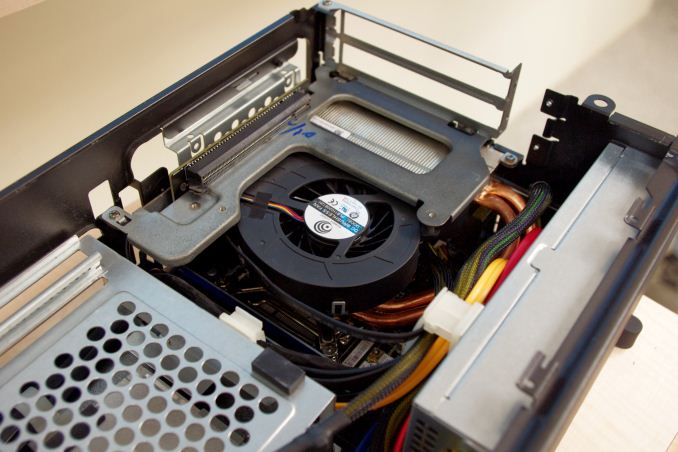
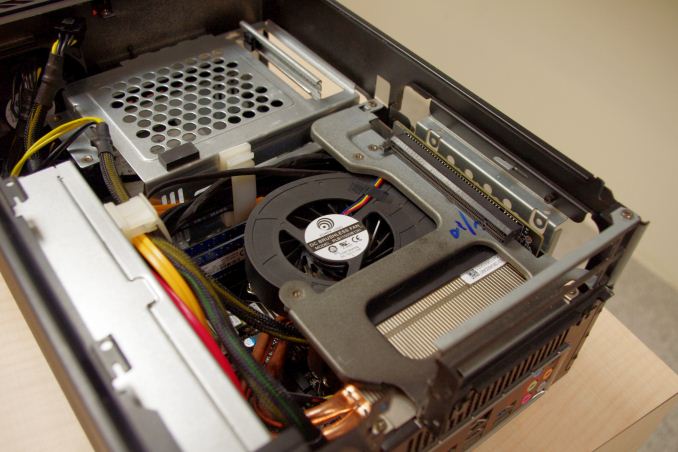
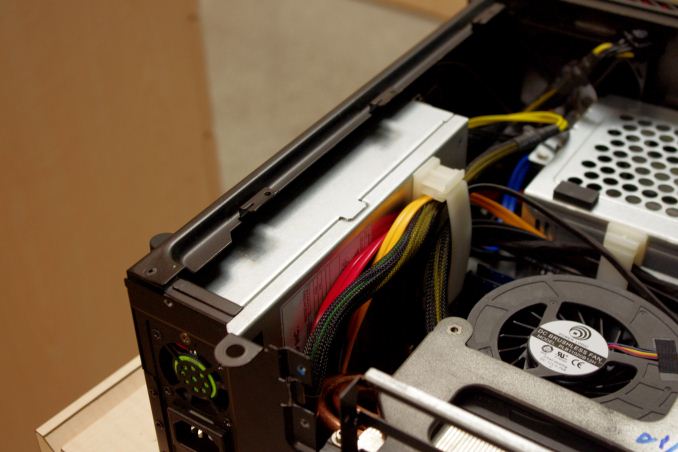
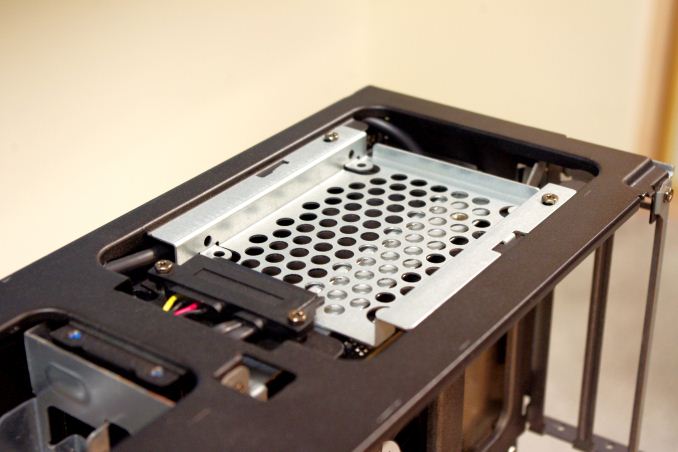

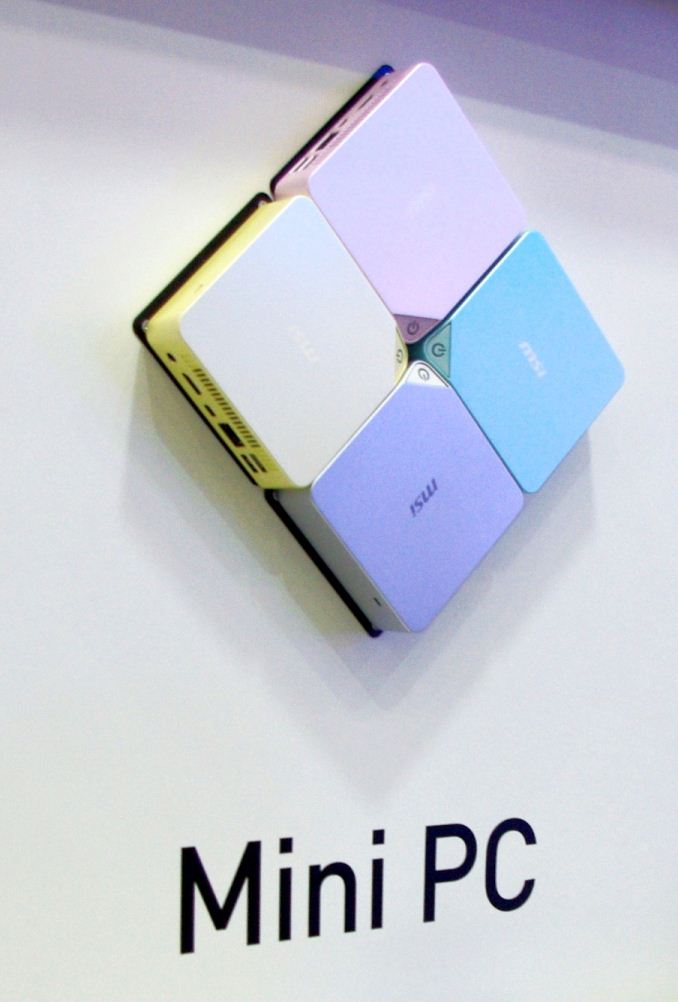
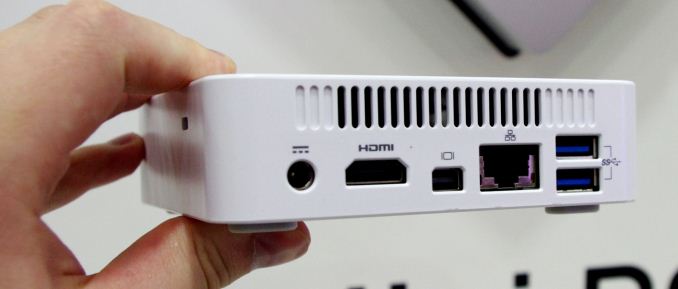








50 Comments
View All Comments
Turbinz - Monday, June 29, 2015 - link
Where is the Radeon Fury X review??? This site is a day late and a dollar short.Morawka - Monday, June 29, 2015 - link
AMD is a sponsor so they are probably giving amd time to optimize a driver that reduces image quality to increase benchmark scores.DanNeely - Monday, June 29, 2015 - link
As has been stated somewhere on the site almost daily (today on the twitter feed sidebar); it's been delayed because Ryan Smith has been ill. He's currently hoping to have it finished tomorrow.For the impatient (and to disspell silly conspiracy theories), scores were posted in bench several days ago.
Here is the Fury X (OCed version) vs the GTX 980 Ti.
http://anandtech.com/bench/product/1514?vs=1496
D. Lister - Monday, June 29, 2015 - link
"it's been delayed because Ryan Smith has been ill."It is sad that a site as big as AT cannot afford more than a single writer. But then again I suppose it was "just" a flagship product from a tech giant, it is not like this was important or eagerly awaited by a lot of enthusiasts or anything. :)
Ryan Smith - Monday, June 29, 2015 - link
The reality is that we're a very thin operation. This allows us to be nimble, but also allows us to publish those articles that we're genuinely interested in rather than having to succumb to clickbait to make ends meet. It's not perfect (no system is), but it's better than the alternative.chizow - Monday, June 29, 2015 - link
Idk Ryan, normally I'd agree with you but missing Fury X launch was pretty bad. 960 launch was obviously less high profile but still a pretty glaring hole in the midrange. And that review still isn't published.Anyways, at this point you probably did AMD a solid lol, Fury X was certainly a forgettable launch from AMD's perspective given the amount of hype leading up to it. Do you still think they launched it "exactly the way they wanted to?"
grrrgrrr - Monday, June 29, 2015 - link
Missing a launch where reviews just raise doubts is not a bad thing. A genuine review (and also GPU) is worth a thousand quick ones.Byte - Monday, June 29, 2015 - link
I've switched to AMD (because of mining and have over a dozen cards) and the Fury really isn't impressing me and might jump back to Geforce, but really hope we can get AMD to stay in business so we can have some nice competition and innovation. Hopefully Ryan can give AMD some light they really need!Samus - Monday, June 29, 2015 - link
Yeah these days mining on AMD GPU's is completely dead, and that was the only relevant reason to buy them over the last few years. nVidia has been killing it since the 600 series dollar-for-dollar in "most" games.nightbringer57 - Tuesday, June 30, 2015 - link
Not really.Until Maxwell, AMD cards still were very competitive, even if they were aging.
My Tahiti LE 7870/7950 hybrid was a steal for less than 200€ and may be the card that lasted me the most for its value. And even with the less-than-impressive Fury launch and the big gap in power consumption, AMD cards are still giving at least overall slightly better bang for your bucks in raw performance.